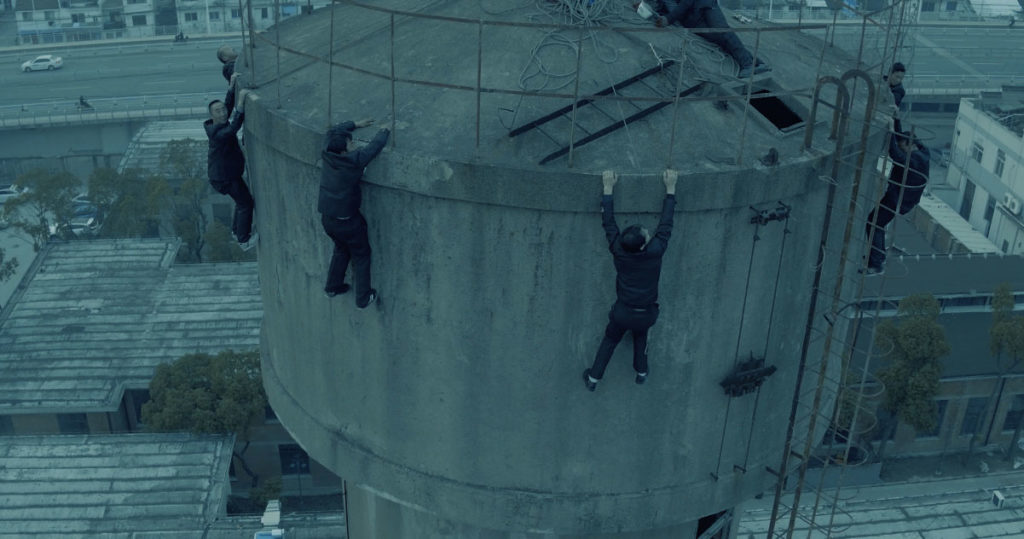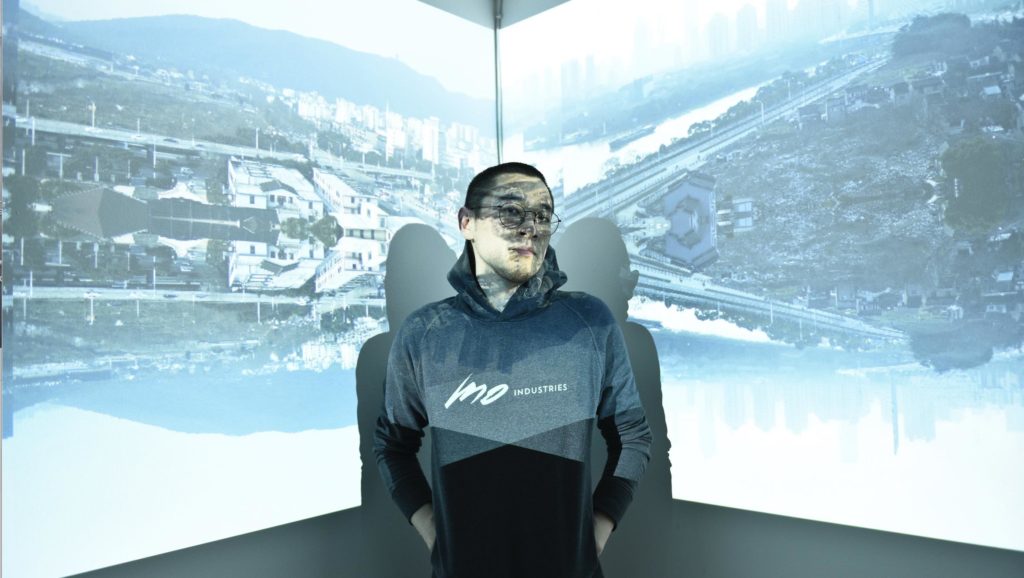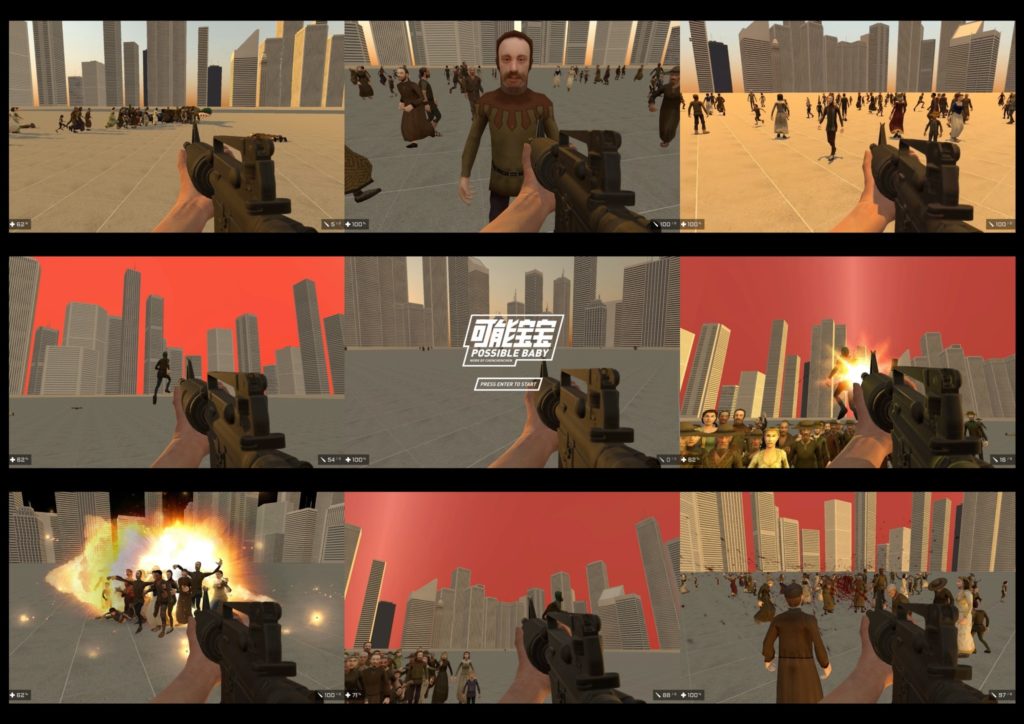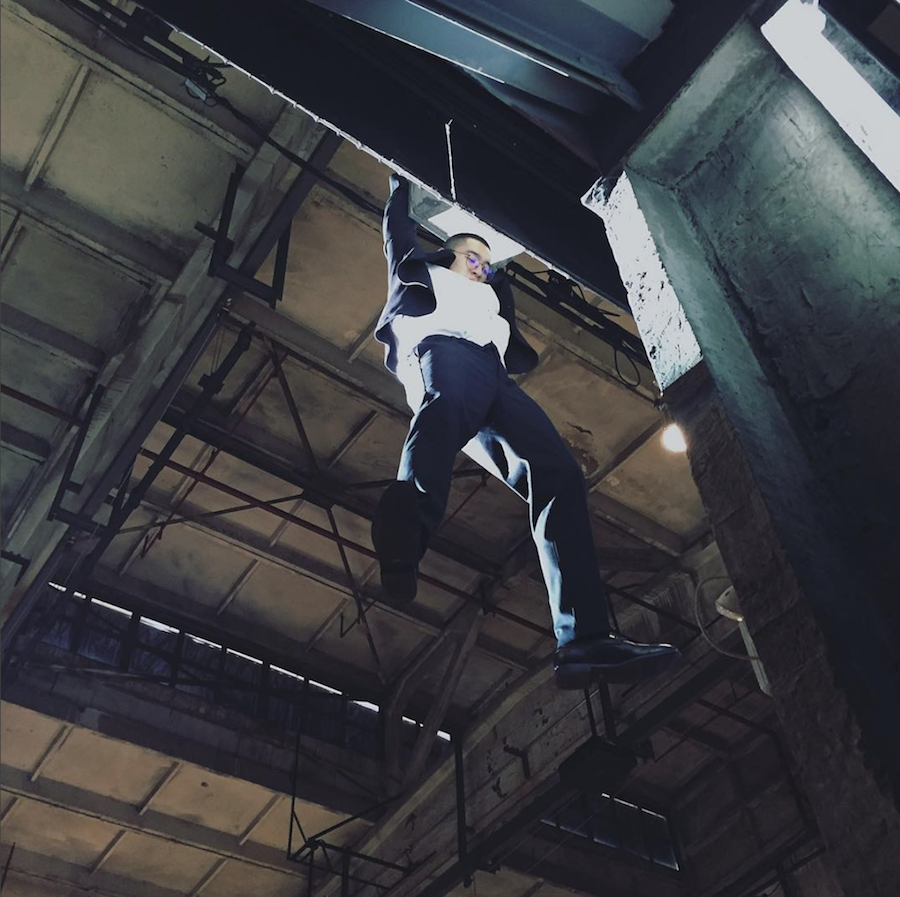Chinese Artist Chenchenchen Suspended 10 Men From a 111-Foot-Tall Tower to Explore the Idea of Mercy


Artnet Gallery Network

In The Mercy of Not Killing 2.0, an unsettling performance piece by 30-year-old Chinese conceptual artist Chenchenchen (CCC), 10 construction workers hang by their hands from a 111-foot-tall tower in the Chinese city of Wuxi. The workers wriggle and shift desperately as they try to maintain their grip and keep from plummeting—presumably—to their death.
A video of this performance, captured by drone, is included in CCC’s solo show, “The Mercy of Not Killing,” co-produced by MO-Industries and Migrant Bird Space in Berlin. As camera hovers above the dangling men, we see that they are actually connected by rope. Thus, if one person falls, they all fall.
For CCC, the conditions of this situation symbolize the dynamic between people today, in an increasingly globalized world.
“It refers to a situation in which one individual restrains his will in various ways to avoid killing others around him,” the artist says in a statement for the show. “This mercy can be viewed as a joint positive power, generated by balancing a variety of forces that a human of modern society has to bear.”
“It is a model that represents the connections between all of us, living together,” he further explains in an interview with artnet News. “It is a ‘mercy’ not to kill, like a special gift of self-discipline. But how can ‘not killing’ become a gift? Everybody ignores this kind of mercy until something extreme happens.”
This is the second version of The Mercy of Not Killing, commissioned by the Ullens Center for Contemporary Art in Beijing, and included in the institution’s exhibition, “The New Normal: Art and China in 2017.” The first version, performed at the MING Contemporary Art Museum in Shanghai, featured the artist himself dangling 30-some feet above the museum floor for an hour.

Chenchenchen. Courtesy Migrant Bird Space. Photo: Andrea Katheder.
This kind of evolution is typical of CCC’s practice. For instance, another one of the artist’s works, Possible Babies, has taken many forms since its inception in 2012, from photography to painting to—most recently—a video game. The latter, aptly titled Find Chenchenchen and Kill Him (2017), is included in the Migrant Bird show. It takes the form of a first-person shooting game in which the main player is challenged with finding and killing CCC’s avatar amidst an ocean of lookalikes.
“Find Chenchenchen and Kill Him” continues CCC’s ongoing exploration into genealogy and “successology” (a term he playfully uses to denote both the concept of successorship and the pseudo-science of achieving success, expounded by self-help books). The work is, among other things, a sardonic rejoinder to China’s one-child policy, which, having only been abolished three years ago, has had profound effects on the country’s genetic landscape.

Video still from Find Chenchenchen and Kill Him (2017). Courtesy of the artist and Migrant Bird Space.
All of CCC’s work exists within the world of what he calls “Poor Sci-Fi”—a conceptual framework that marries the language of big-budget science fiction movies with the mundane social and economic fears that we experience daily. It’s a strange and lofty concept, but it makes sense when looking at his work.
“It’s not a story about spaceships,” CCC says. “This is cosmic opera. Poor Sci-Fi is about using the landscape of the human, with traits like mercy, envy, lust, and love as the materials to create a sci-fi feeling.”

Chenchenchen performing The Mercy of Not Killing 1.0 (2016) at MING Museum Shanghai. Courtesy of the artist and MING Museum Shanghai.
“The Mercy of Not Killing” is on view at Migrant Bird Space in Berlin through July 20, 2018.